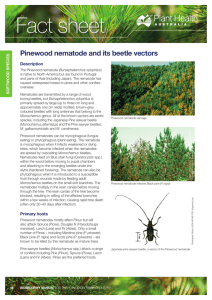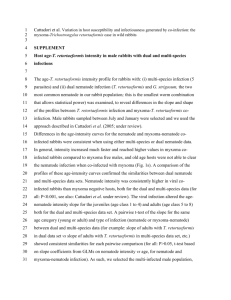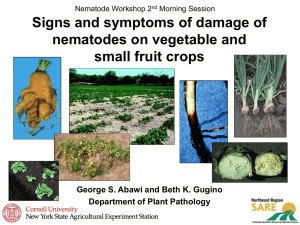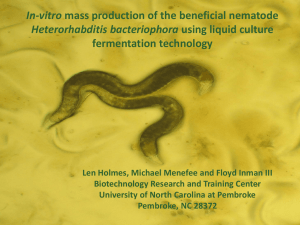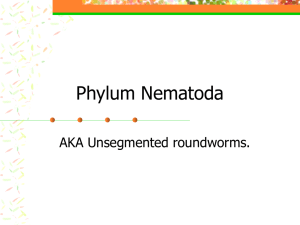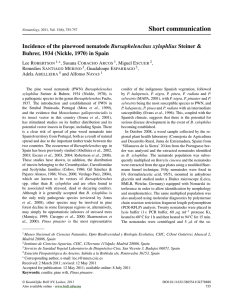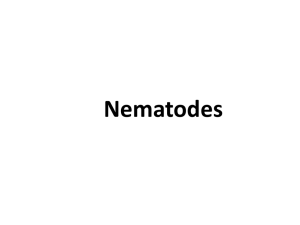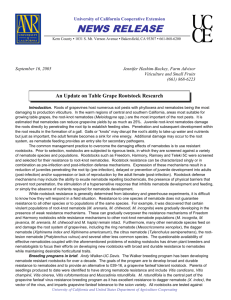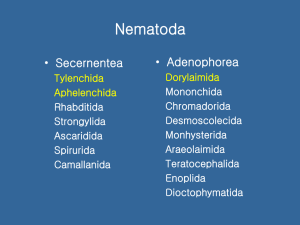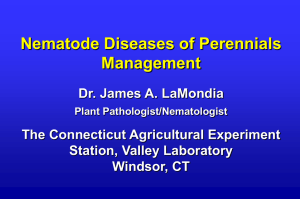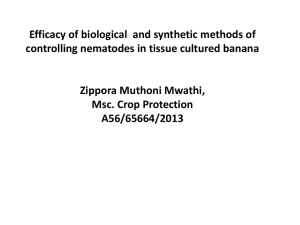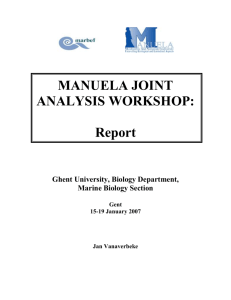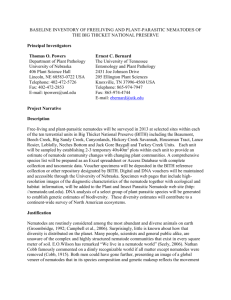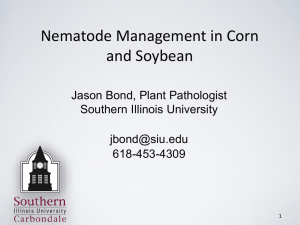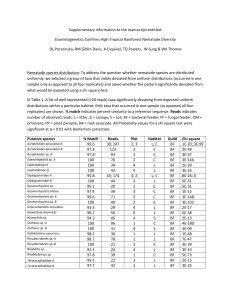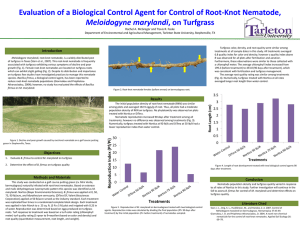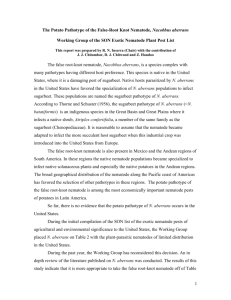Tylenchida
advertisement
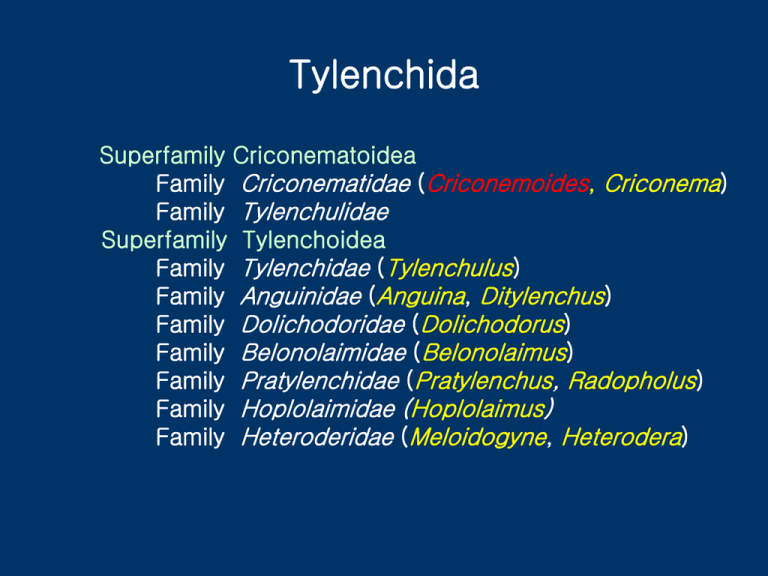
Tylenchida Superfamily Criconematoidea Family Criconematidae (Criconemoides, Criconema) Family Tylenchulidae Superfamily Tylenchoidea Family Tylenchidae (Tylenchulus) Family Anguinidae (Anguina, Ditylenchus) Family Dolichodoridae (Dolichodorus) Family Belonolaimidae (Belonolaimus) Family Pratylenchidae (Pratylenchus, Radopholus) Family Hoplolaimidae (Hoplolaimus) Family Heteroderidae (Meloidogyne, Heterodera) Aphelenchida Family Aphelenchidae (Aphlenchus) Family Paraphlenchidae Family Aphelenchoididae (Aphelenchoides, Bursaphelenchus) Family Senuridae Family Entaphlenchidae Criconemoides (Ring nematode) 1. 2. 3. 4. 5. Ectoparasitic nematode Males rare Unique cuticular marking: segmentation, spines Shape of esophagus: Bowling pin Difficult to extract by Bearmann method because of nematode mobility -Use centrifugal sugar floatation (원심분리에 의한 설탕물 부유법) Ring nematode Aphlenchoides (Bud and leaf nematode) 1. Diverse host group; Fungi, Insect, plant 2. Morphology - Oval shape median bulb - Slender body shape - ♀ ; Monodelphic, prodelphic ♂ ; Monorchic, outstreched - Mucro ; 꼬리끝에 형성된 돌기 3. A. besseyi (rice white tip nematode) A. fragariae (strawberry nematode) Aphlenchoides • Aphelenchoides besseyi is best known as the causal agent of white tip disease of rice. It is a facultative ecto(생장점) - and endoparasite(엽육 조직) of the leaves and young tissues of rice, the characteristic symptoms including whitening of the top several centimeters of the leaves, necrosis, distortion and crinkling of the flag leaf. The nematode is seed borne and can survive in a state of anhydrobiosis for several years on stored grain, but much less under field conditions. Rice white tip disease Busaphlenchus xylophilus (pine wood nematode) 1. Pine wilt disease 2. First report in Japan 1905 : 일본 나가사끼 소나무좀류 피해로 오인, 1969 : 소나무재선충 판명 3. 국내-1957 : 전남 구례군 마산면 황전리 발생 4. 미국(1934), 프랑스(1979), 대만(1980), 중국(1982) 5. “소나무의 에이즈” Distribution of pine wood nematode Morphological distinction: Spicule of males: large, uniquely curved, paired, with sharply pointed prominent rostrum(돌기); distal ends of spicules with typical disc-like expansions. Female pine wood nematode Male pine wood nematode Pine sawyer (솔수염하늘소) Feeding behavior <소나무 재선충의 피해가 나타나는 과정> - 재선충 침입 6일후 : 잎이 밑으로 처지기 시작 - 재선충 침입 20일후 : 잎이 시들기 시작 - 재선충 침입 30일후 : 잎이 급속하게 붉은색으로 변색 고사시작 * 재선충이 침입한 나무는 100% 고사 Damaged tree infected by Bursaphelenchus xylophilus Aug. 20, 2003 Aug. 25, 2003 Sep. 3, 2003 Tree mortality caused by pinewood nematode ◈ Several organisms are involved in pine wilt disease. The nematode Bursaphelenchus xylophilus is transported to the trees by Pinesawyer beetles, and feed on Blue-stain fungi as well as cells lining the resin canals of the tree. Bark beetles help to introduce the Blue-stain fungi into the tree, allowing the nematodes to feed and multiply. ◈ During warm periods in the summer, the nematodes spread throughout the tree and multiply very rapidly. As they destroy the resin canal cells, the tree's water-moving system becomes clogged and resin flow slows, then stops. Wilt symptoms develop and the tree dies. (Life cycle; 30℃-3 days, 25℃-4~5일, 20℃-6일) Disease cycle by Bursaphlenchus xylophilus ◈ Dead pines should be cut promptly and burned, buried or chipped. Do not keep the wood for firewood. Wood chips pose minimal risk of spreading pine wilt, but beetles will continue to emerge from logs kept for firewood. Pinesawyer beetles lay their eggs under the bark of the pine, and a new generation emerges in the spring, ready to infect new pine trees.
